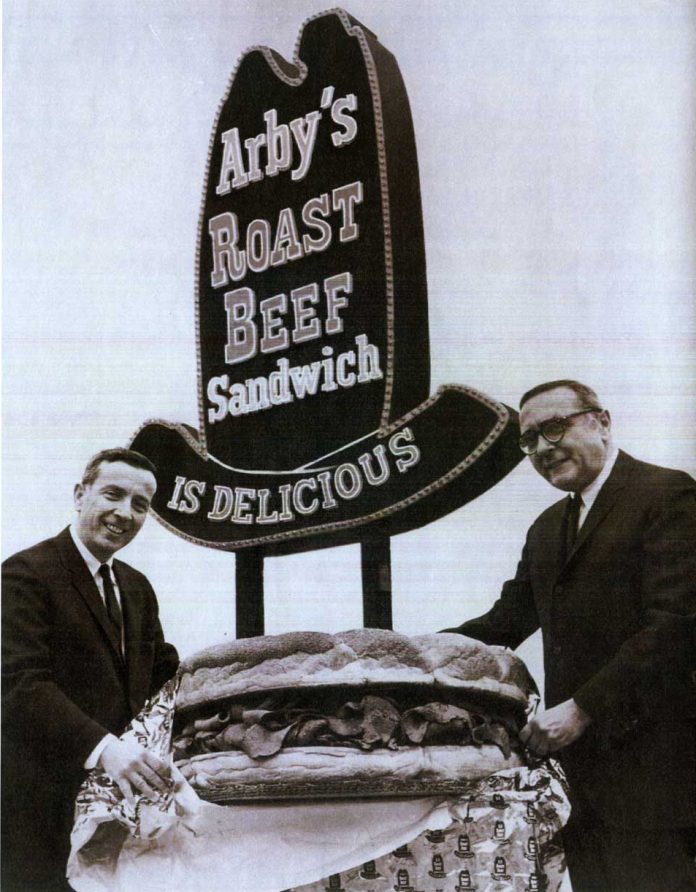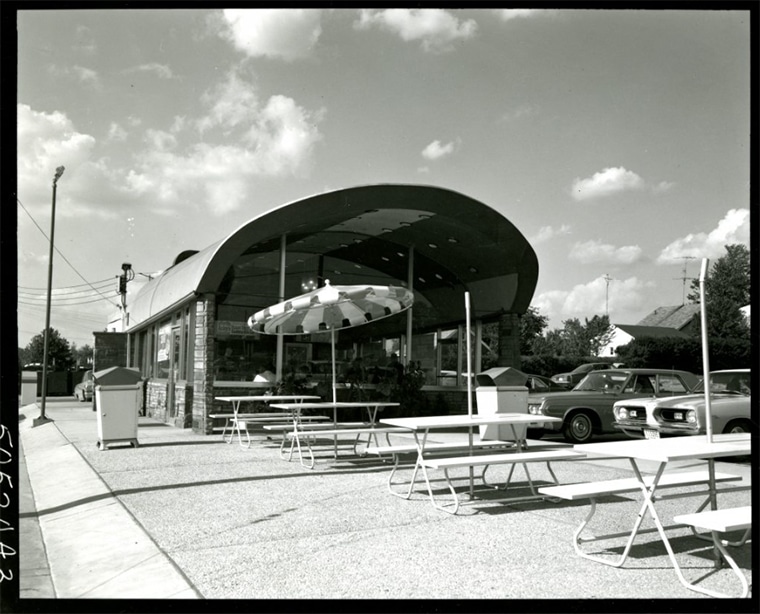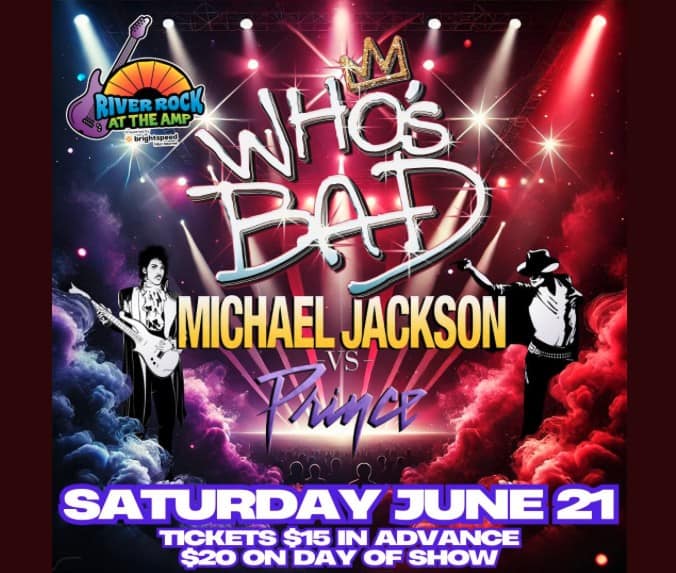
When you think of fast food in the 1960s, a few names come to mind – McDonald’s, Kentucky Fried Chicken and Arby’s.
McDonald’s, led by the innovative Ray Kroc, became a standard-bearer for developing products aimed at a youthful, increasingly mobile America. Colonel Sanders, whose face was emblazoned on buckets of fried chicken, represented a product inextricably associated with its founder.
But Arby’s was different. The chain’s original stores were upscale and understated. Although its founders, brothers Forrest and Leroy Raffel, were present in the day-to-day operations, they were not widely known. They didn’t use clowns or cartoon characters to attract station wagons full of kids. The company slogan, “Arby’s Roast Beef Sandwich is Delicious,” seemed simple, but when stated on a massive, blinking, 40-foot neon sign, it became an unquestioned marketplace fact.
Surprisingly, a lot of Mahoning Valley residents don’t know that Arby’s was created 50 years ago in suburban Youngstown. The Raffel brothers, owners of a local restaurant supply company, opened the first Arby’s on Boardman-Poland Road in 1964.
Arby’s, derived from the initials of Raffel Brothers, was headquartered on Colonial Drive in Liberty. Although the Raffels sold the company to beverage giant Royal Crown Cola in the 1970s, many early offerings were developed locally, including the iconic roast beef sandwich and Jamocha Shake. And local companies, like Schwebel’s and the Peskin Sign Company, factored in the company’s early development. Fifty years later, it’s surprising how much of the brothers’ imprint remains on the restaurant chain. Even today, dining at Arby’s remains an adult experience.
A program last July brought surviving founder Leroy Raffel to Ohio for a special anniversary celebration. Accompanied by his wife, Shirley “Shankey” Raffel, Leroy marked the chain’s golden anniversary in a program hosted by the Mahoning Valley Historical Society. The event brought together former employees, franchise owners and current corporate brass. That night, Raffel spoke candidly – sometimes with great emotion – about the company he created with his late brother, Forrest. The following interview was conducted prior to the event by Mark C. Peyko, Metro Monthly Editor and Publisher.
Metro Monthly: Thank you, Mr. Raffel, and welcome. Thanks for talking to Metro Monthly and “Homeplate.” We’re going to start with a few basic questions that I have. McDonald’s had a burger menu. Kentucky Fried Chicken had poultry. But what made you do roast beef with Arby’s?
Leroy Raffel: Well, we wanted to do something different. Nobody was doing roast beef and that’s what we did.
Metro Monthly: Arby’s was different than its peers in the marketplace. For one, it seemed like it was aimed at an adult market. Was that intentional?
Raffel: Absolutely. It was always aimed at adults.
Metro Monthly: When Arby’s was started, westerns were pretty big on TV and you also had Bonanza and Ponderosa as restaurants. How did the popularity of westerns help you in your marketing of the restaurant?
Raffel: We never considered that. I don’t think it had any bearing at all. We did have somewhat of a western theme in our original store, and, of course, the western hat was a western hat.
Metro Monthly: What did your family and friends think when you came with this idea that you wanted to this restaurant?
Raffel: They thought we were nuts because we were in the restaurant-equipment business and supporting our families and educating our children and in order to develop Arby’s, we had to drop the equipment business and go into Arby’s, which was a new start-up. So by the time we opened the first store, we had already destroyed our previous business and our families didn’t think too much of it, but that’s what we did.
Metro Monthly: Describe what the world was like when you and your brother started Arby’s. What was the whole landscape of restaurants and fast food like then?
Raffel: Well, fast foods, although they had been around for quite some time, were not as important in the economy as they are today. McDonald’s was a strictly carry-out operation; you stepped up into the store, but there were no seats and they sold a hamburger for 15 cents. And Kentucky Fried Chicken was a menu item in restaurants. And they had not yet started their independent stores. Burger King was around – they weren’t around here very much – so I can’t tell you about them. But it was quite revolutionary to be starting with a 69-cent sandwich against McDonald’s at 15 cents.
Metro Monthly: The price was so much higher. What did you do to sell that?
Raffel: Obviously, we determined that people liked a thinly sliced roast beef sandwich on a nice bun and we felt that they would pay the price for it. We priced it according to the cost, so we had to get 69 cents. We couldn’t get 15 cents for a roast beef sandwich. But people really were enthusiastic about it and we did a very good business.
Metro Monthly: What did each brother bring to the business in skill and temperament?
Raffel: My brother was a graduate of the Cornell Hotel School. I was a graduate of Wharton School at the University of Pennsylvania, which is business. So he was the food man and I was more on the business end and we always complemented each other – with an e, complemented – and he took care of his end of the business and I took care of mine. We never had a hostile disagreement in all the many years.
Metro Monthly: Who designed your first restaurants? Was that local or did you have a national company?
Raffel: We had been in the restaurant-equipment business. We designed restaurants – that’s what we did. So we did the basic design. However, we hired an architect to design a building around our concept.
Metro Monthly: Your goals for image and branding – was that all from the beginning stated in what you wanted to do?
Raffel: Absolutely. We felt that if you were going to get a higher price for a higher-quality product, the building had to be in accordance with that concept. So the building itself was really upscale. It had a natural sandstone wall in the back, a curved ceiling with recessed lights. There was piped-in music. There was a glass-enclosed rotisserie with a beautiful roast revolving. Our counter attendants were attired in chef’s uniforms. And you walked into this place and there was sound, music and beauty.
Metro Monthly: Another element of the restaurant is the iconic Arby’s sign. It’s my understanding that a local sign company designed that for you. Did they design it or did they just make it for you?
Raffel: We designed the logo and they made a sign using the logo. The logo was the hat that said “Arby’s.”
Metro Monthly: The sign was so much bigger than a lot of other things out there.
Raffel: It was 40 foot high.
Metro Monthly: Forty-feet high. And how long was it before …
Raffel: Approximately.
Metro Monthly: Approximately 40-feet high.
Raffel: It was exactly 40-feet high.
Metro Monthly: How long was it before sign ordinances and a change in company direction changed how the 40-foot sign was designed?
Raffel: Well, in those years there weren’t too many sign ordinances. That came later. So if you were to build a store today, you could not have a 40-foot sign.
Metro Monthly: I was talking to Lee Schwebel from Schwebel’s and he said they developed the bun for you at Schwebel’s.
Raffel: They did. And my brother worked with them, but they did design the bun. It was an egg bun with sesame seeds. And we buttered it and toasted it and it was very good and it complemented the sandwich.
Metro Monthly: Did that (the company) take very long to develop? Was that something you went back and forth on?
Raffel: We got this idea to start this concept on October 31, 1963 and we opened the first store on July 23, 1964. So, however many months that is – less than 10 months – that’s how long it took. Large chains, when they want to develop a new concept like Olive Garden would spend five years and a lot of money.
Metro Monthly: That’s one thing I was wondering, too. Today focus groups determine menus and everything is so segmented and everyone is reaching a smaller group of people, but what did you do in 1964 to do market research and determine what you were going to serve?
Raffel: We did no market research. We ran across a place in Revere Beach, Massachusetts, which is on the ocean. We went there on October 31, 1963 at midnight and, being a summer resort and a cold and rainy night, the only lights on in that entire area were from a place called Kelly’s and people were standing outside in the rain at a window and buying roast beef sandwiches, which was thinly sliced on a nice bun. So we didn’t invent the idea of a roast beef sandwich, just as McDonald’s didn’t invent the idea of a hamburger on a bun. But that’s where we got the idea. They’re still there and they’re probably the highest-volume fast food outlet in the country.
Metro Monthly: One thing that’s a quirky element at Arby’s is the Horsey Sauce. It’s kind of spicy and people weren’t really used to spicy things, I don’t think, in restaurants at the time. Was there a lot of discussion in the company whether or not to use that? Do you remember how that was developed?
Raffel: Well, it wasn’t unusual for restaurants to serve horseradish on the side as a condiment with roast beef. So Horsey Sauce is horseradish. So it wasn’t so revolutionary.
Metro Monthly: … As far as food goes – were there things that maybe didn’t work out? That you pulled from the restaurant as far as food items go?
Raffel: The original Arby’s only had one sandwich. And no French fries. So there wasn’t much to pull.
Metro Monthly: Last question I have for you. You owned Arby’s during a time when American tastes were starting to change and things got bigger and more competitive. I’m wondering, your decision to sell Arby’s at the time that you did, was that spurred more by R.C. Cola approaching you or did you think things were changing and you wanted to …
Raffel: We had gotten into financial trouble, not because our stores weren’t profitable, but we had a public issue that never came out on Wall Street and we were in financial trouble. My brother and I were ousted from the company and new management was brought in by the banks and the company was in Chapter 11. I was invited to come back and run the company when the company was going down the drain and we were able to turn it around very quickly. And I really don’t remember the original question, but I know the answer. What was the question?
Metro Monthly: The question was What made you sell the company?
Raffel: That was the question. What made us sell the company is we were really chastened by such a traumatic experience and once the company was profitable, then we didn’t want to take the chance of getting into financial trouble again. We felt that we needed a large company with large financial resources behind us and that’s why we sold the company.
Metro Monthly: I lied. I have one more question. When you see Arby’s out in the world, what do you think about when you just see how many there are and that you created it?
Raffel: Well, the principal pleasure that I get and my brother, who’s not with us anymore, always got was that there were just ordinary people that had these franchises and not only made a good living, but created wealth on into subsequent generations and that was the biggest reward that we had.
Editor’s note: This article originally appeared in The Metro Monthly in 2014. metromonthly.wordpress.com…

***
Metro Monthly is a local news and events magazine based in Youngstown, Ohio. We circulate throughout the Mahoning Valley and offer print and online editions. Be sure to visit our publication’s website for news, features and community events. Office: 330-259-0435.
© 2022 Metro Monthly. All rights reserved.




